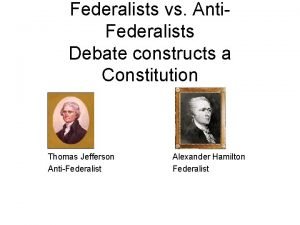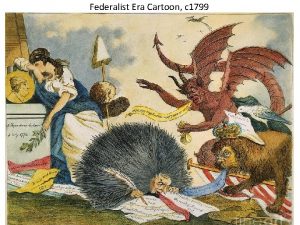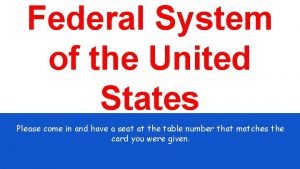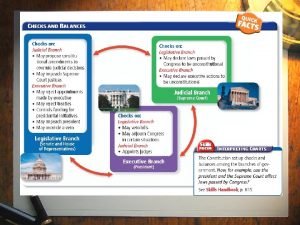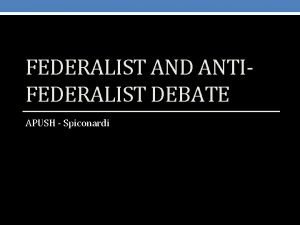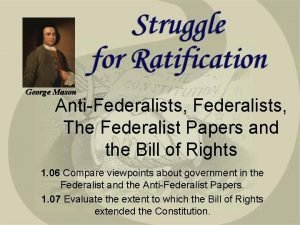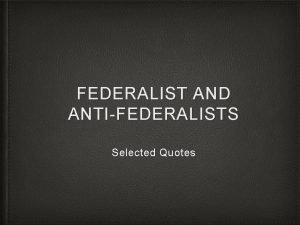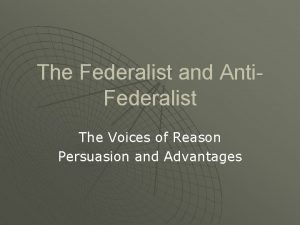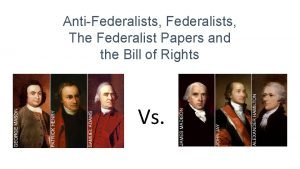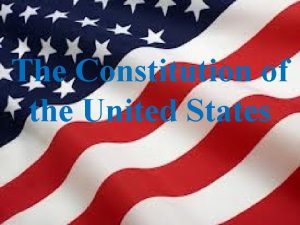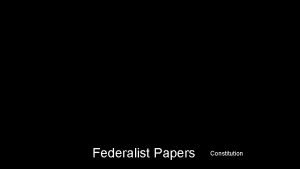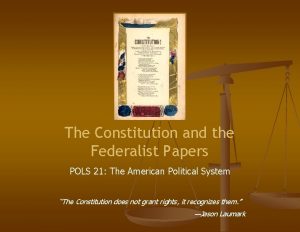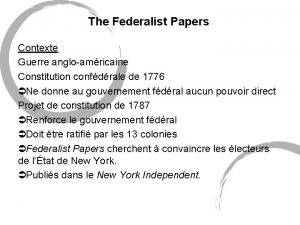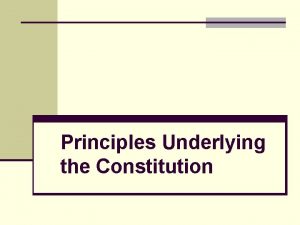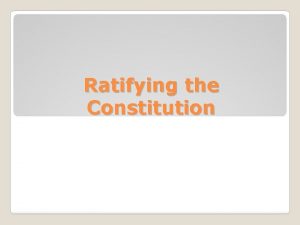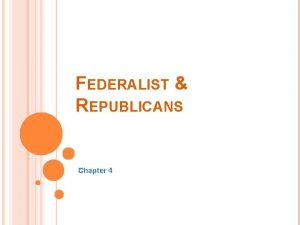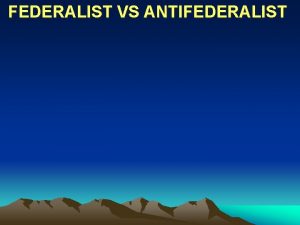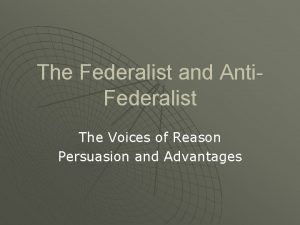The Constitution Chapter 3 Federalist Papers No 51













- Slides: 13

The Constitution Chapter 3


Federalist Papers, No. 51 – Primary Source

I. Structure and Principles • Oldest written constitution still in effect today • Has lasted 222 years due to the flexibility and adaptability of the document • Flexible due to its very nature, which is brief & ambiguous

A. The Preamble • Preamble – Introduction to the Constitution • Details six goals of the Constitution • 1) “To form a more perfect Union” – Wanted to create a better government than the Articles of Confederation • 2) “To establish justice”

• 3) “To insure domestic tranquility” – Preservations of peace within the nation • 4) “Provide a common defense” – Protect citizens against foreign enemies • 5) “To promote the general welfare” – All individuals given equal opportunity for success • 6) “To secure the blessings of liberty” – Protection of individual freedoms


B. Articles and Amendments • Articles – Constitution contains seven divisions or parts • Supremacy Clause – The Constitution, laws passed by Congress, and treaties of the U. S. are the supreme laws of the land • Amendments- Provide changes to the original document


C. Major Principles • Popular Sovereignty – Rule by the people • Federalism – Governmental power is divided between the federal and state government – Helps limited the federal government’s power

• Separation of Powers – Division of power among the three branches of government • Ensures that no single branch of government becomes too powerful • Each branch is given powers that can’t be assumed by another branch

http: //www. annenbergclassroom. org/Asset. LAIC. aspx? id=1421

• Judicial Review – Power of the Supreme Court to declare laws unconstitutional • Marbury v. Madison (1803) – Gave the Court the power to declare laws unconstitutional
 Federalist vs anti federalist
Federalist vs anti federalist Federalist vs anti federalist cartoon
Federalist vs anti federalist cartoon Federalist vs anti federalist political cartoon
Federalist vs anti federalist political cartoon Federalist or anti federalist quiz
Federalist or anti federalist quiz Federalist vs anti federalist apush
Federalist vs anti federalist apush George mason quotes anti federalist
George mason quotes anti federalist Anti federalist papers quotes
Anti federalist papers quotes Anti federalist papers
Anti federalist papers Anti federalists
Anti federalists The federalist papers
The federalist papers Texas constitution vs us constitution
Texas constitution vs us constitution Nc constitution vs us constitution
Nc constitution vs us constitution Constitution what is constitution
Constitution what is constitution The constitution lesson 1 principles of the constitution
The constitution lesson 1 principles of the constitution
